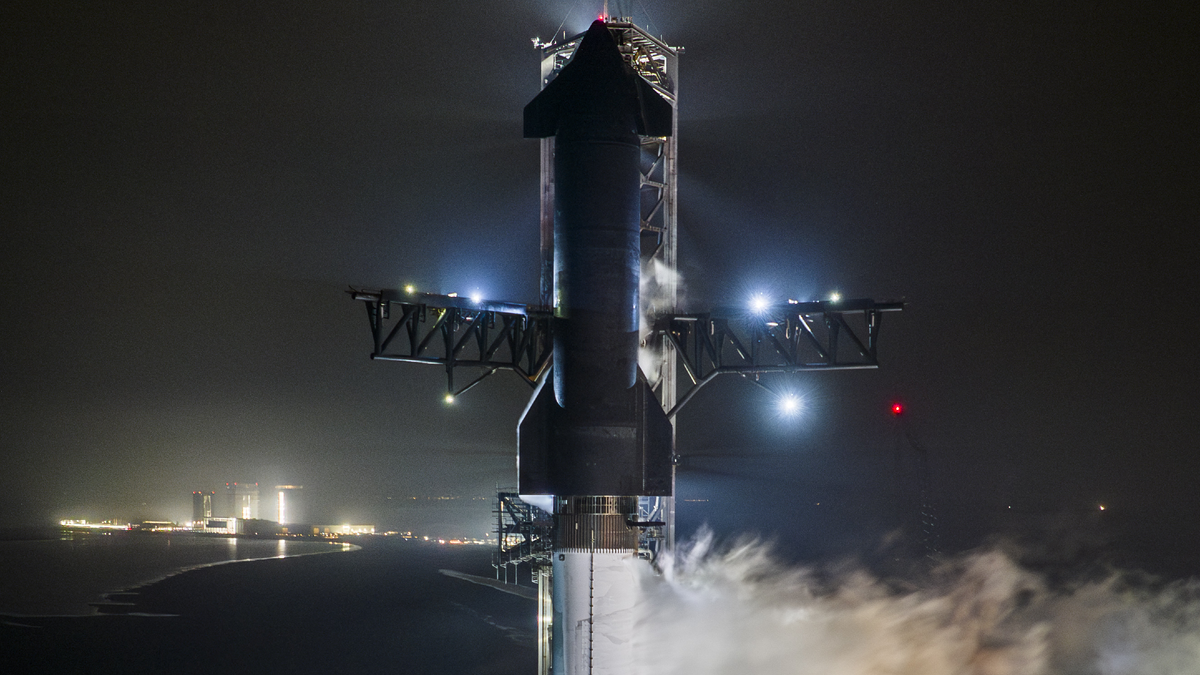Follow us on Google News (click on ☆)

SpaceX's Starship Flight 3 and its Super Heavy booster on the launch pad during a nighttime fueling test at the Starbase facility in Boca Chica, Texas.
Credit: SpaceX
The long-term goal of Starship is ambitious: to carry astronauts to the Moon as part of NASA's Artemis 3 mission, scheduled for 2026 at the earliest. However, before achieving this lunar goal, SpaceX must overcome several challenges, notably achieving Starship's orbital placement, a feat that eluded it during its first two test flights.
In its first test flight in April 2023, the ship failed to separate from its booster, leading to its controlled destruction shortly after liftoff. The second attempt saw a successful separation between the Starship vessel and its Super Heavy booster but ended in a spectacular explosion of the booster shortly thereafter, followed by the destruction of the vehicle itself shortly before atmospheric re-entry. These failures have not discouraged SpaceX, which has since worked to rectify the flaws identified by the U.S. Federal Aviation Administration (FAA). The company has announced that these corrections have been completed, thereby increasing the chances of success for the next test flight.
The Starship consists of two main parts: the upper stage made of stainless steel, also called Starship, and its first-stage booster, the Super Heavy. Together, they form a structure exceeding 400 feet (122 meters) in height. This third test flight is scheduled for March 14 from the SpaceX launch site near Boca Chica, Texas, where a crucial fueling test was recently successfully conducted.